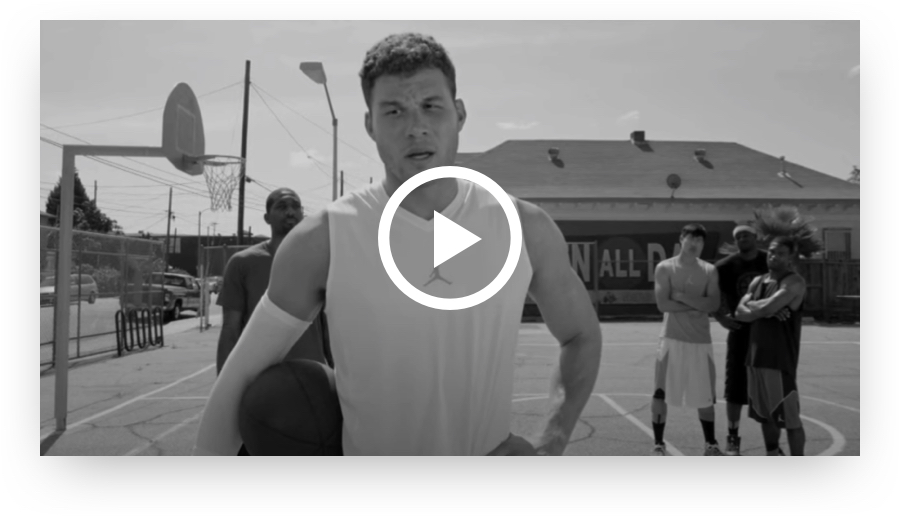On message strategy and more.
On message strategy and more.
True confession: I thought this blog was going to be easy to write. After all, I’m an advertising copywriter and a musician.
Then I started researching. The more I read, the more I realized how complex this topic really is. So, my plan for an easy-as-pie blog article went out the window. (Dang it.) But in its place is something better, I think. Here’s a look at some of the many factors you should consider when you’re trying to find just the right piece or song to help convey your message.
Music is a communication tool.
A music track is worth a thousand words. Its power lies in its ability to both express the emotions of the composer, performer, or situation and evoke emotion in the audience, whether it’s one person listening in their car or thousands in a packed stadium. When you add the right piece to a commercial or a video, it can magnify the power of the message and make people pay attention — and actually feel something.
Helping your audience feel something matters. Because science proves that we make buying decisions emotionally. Then we rationalize those decisions logically. Not the other way around.
Music isn’t just nice, audible decoration. It’s a powerful tool that can grab attention. Increase recall. Influence purchase decisions. Add drama without being distracting. Or create levity that words alone just can’t. Music can make a spot more memorable than almost any other single element can.
Exhibit A
Want to use music masterfully to help communicate your message? Here are some practical considerations and tips.
First consideration when choosing video music: Should I use a voiceover or a vocalist?
The main thing to ask yourself here is, “How am I communicating my message?” If you’re using a voiceover to speak to the audience, you don’t want anything to get in the way of that voice. So don’t choose music with competing lyrics and risk muddying your message or losing their attention.
By the same token, if you’re using song lyrics to carry the bulk of the communication load, don’t add a voiceover to the mix. If you need to, add minimal text on screen to supplement or reinforce your message.
Why is this important? Because as much as we like to believe the opposite, humans are terrible at multitasking. People can’t process more than one message at a time. If you pair a voiceover with song lyrics, odds are, people won’t be able to hear or process either.
Another note about the “I’m your puppet” example above: The song works for lots of reasons, but one of them is simply that the lyrics of the song complete the story of what’s happening on the court without the need for explanation. It’s a clever approach, because when the audience gets the connection between the plot and the lyrics, they’re in on the joke. It makes them feel smart and included. And that’s always a good thing.
Second consideration when choosing video music: What musical genre should I choose for my advertisement?
There are reasons almost every pickup truck commercial in history uses country music. It’s been done so much that now people naturally associate the genre with the product. But beyond that, why does it work?
Because the music complements the product. The industry term for this is congruence. The music “fits the product or brand in order to positively affect attitude, recall, and eventually purchase intention,” as one researcher put it.
I think congruence, in part, stems from ingrained associations that we have with particular genres, even when those associations are subconscious, or we don’t know where they came from. Country music feels appropriate for pickup trucks. Country is often patriotic and down-to-earth. It voices the struggles of the everyman. And it feels familiar and comfortable. If a marketer wants to send the message that a pickup truck is American-made, reliable, and hard-working, country music is the perfect genre to communicate that.
Classical music, on the other hand, sends a message of elegance, luxury, and sophistication. Why? Because the music itself is complex and sophisticated. And historically, wealthy patrons funded classical composers and musicians. Plus, the upper class could afford to attend concerts.
(Want an example of incongruence? Imagine a retirement home commercial with music by Nine Inch Nails.)
There’s no one-size-fits-all prescription for choosing a genre, but pick something that feels congruent with your message. Here are a few more examples of message/genre congruence.
| If you want to convey… | For advertising… | Consider… |
|---|---|---|
| Edgy intensity | An energy drink | Metal |
| Lighthearted fun | A toy for tweens | Pop |
| Futuristic technology/innovation | A virtual concert via VR | Techno |
| Peace of mind | A beach resort | Easy listening |
Side note, some studies say congruence is absolutely the way to go when choosing music. “TV commercials with music incongruent with the visuals made viewers uncomfortable and resulted in a negative product image,” and negatively impacted message effectiveness. But other studies found the opposite: that “incongruent stimuli enhance advertisement processing, elicit consumer attention, and are more likely to be processed and stored than congruent stimuli.”
Let’s #KeepItReal and admit there’s not really a clear winner scientifically. But we’re recommending congruence since most research indicates it’s the most effective approach. And let’s be honest. If incongruence were the norm, it would quickly lose its unique appeal.
Third consideration when choosing video music: What mood should my musical selection create?
How do you want your audience to feel when they watch your commercial or video? That will help you choose a musical key (major or minor) and style.
For example, let’s say you work in health care, and you’re advertising a medication for people with chronic pain. What message do you want them to receive? Probably something like, “When this medicine relieves my pain, I can get back to enjoying the things I used to do.” You want them to feel optimistic. No doubt about it, choose a major key in this instance. (Major keys are the “happy-sounding” ones.) You can even go a little deeper and choose music that’s slightly upbeat. That sends a message of positivity. It subtly reinforces the idea of the increased physical movement that will be possible for people on this medication. Here’s a good example.
And here are a few other good pairings.
| If you want them to feel… | Consider… | For example… |
|---|---|---|
| Contemplative | A major key without stand-out melodic or soloistic elements | This sounds contemplative. |
| Inspired | A major key with powerful, motivating lyrics | Kelly Clarkson, anyone? |
| Melancholy/somber | A minor key with softer dynamics and lower pitches | Feel the feels. |
| Amused | A major key with quirky instrumentation | Bassoon. Perfect. |
Fourth consideration when choosing video music: What should the pitch frequency be?
This consideration comes from one study’s findings that sound frequency impacts how people process marketing messages. “Low frequencies make people think more abstractly, whereas high frequencies make them adopt a more concrete mindset.” So, if you’re trying to communicate a concrete benefit (like “This cleaner makes your bathroom sparkle”), music in a higher frequency with rich, dominant treble might be a better choice. If you’re selling a more abstract benefit (like “This stationary bike will transform your workout”), a bass-rich track might serve you better.
Bonus consideration when choosing video music: How fast should the tempo be?
This one isn’t as closely tied to the message strategy of your music, but it’s still important, so I’m throwing it in as a bonus.
Consider matching the tempo of your music to the pace of your shots. If the video features multiple quick cuts and scene changes, consider an up-tempo piece that matches the visual energy. Like this.
If it’s a single shot or a few transitions between similar scenes, consider a slower to moderate tempo that complements the video’s slower pace. See this example.
This will give the video a cohesive look and sound, and it might just help your viewers receive your message more effectively.
I know what you’re thinking. “That’s all great. But where can I find royalty-free music for my advertisement?”
There are a lot of websites where you can find royalty-free music that won’t put you at risk of copyright infringement. I suggest checking out several online music libraries and discovering which subscription or payment model works for your project.
Pond5 is a good place to start. You’ll pay a separate fee for each download. There are tons of tracks, and you can filter them by price, duration, tempo, mood, genre, and artist. This is my go-to site for background tracks for commercials, corporate videos, podcasts, and e-learning. They also offer stock footage, sound effects, images, and more.
Want to pay one flat fee for unlimited downloads? Check out Epidemic Sound. They have a couple of different subscription plans based on how you plan to use the service. This site offers more popular music genres (more drum and bass, for example, and less corporate-sounding background music), and offers 30,000+ tracks to choose from.
And finally, check out Premium Beat by Shutterstock. You can get five tracks a month for $12.99 or choose a single-track option for a flat rate. They offer a huge variety in both genre and mood, and they also group their selections into collections for easy browsing.
Get help choosing the right music for your video.
This is a lot. I know. Picking music is a big task that can be time-consuming. It’s important, and it can have serious implications for the success of your message. And if you’re not quite sure what makes a message effective, that can be even more intimidating. So if you’d rather hand the whole thing over, we’d love to take it on. Contact us. We can help you with your music strategy and your message strategy, to make sure your video is hitting all the right notes.








